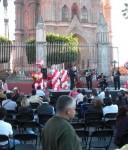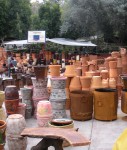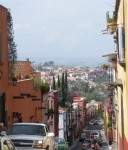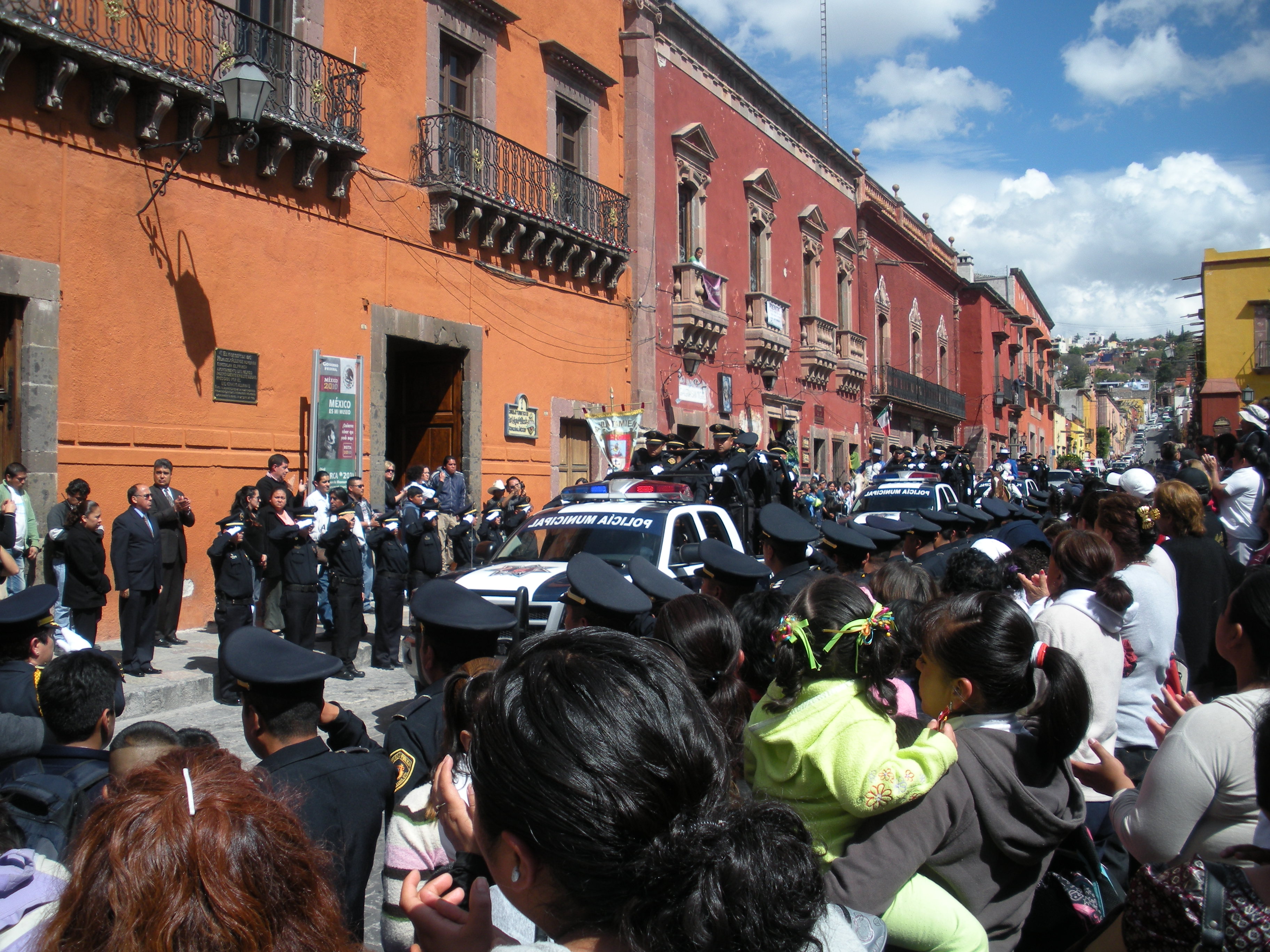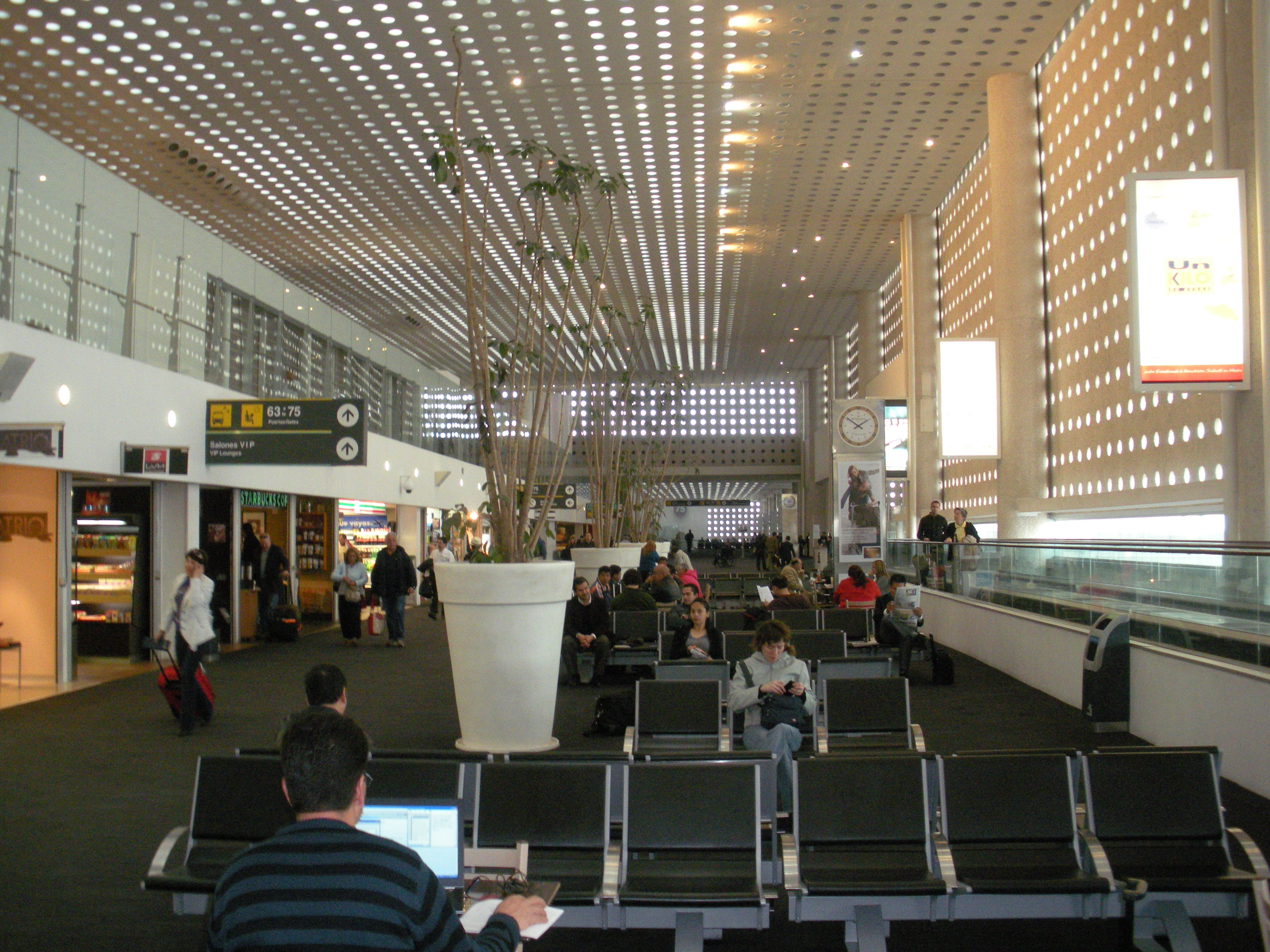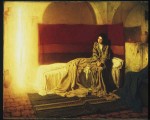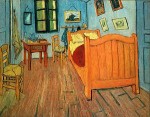Posts tagged ‘culture’
3 Days in San Miguel, part 2
-
Sunday afternoon in front of el Parroquia.
-
Flower pots at the flower mart.
-
San Miguel, now a sprawling community.
- Sunday afternoon in front of el Parroquia.
- Flower pots at the flower mart.
- San Miguel, now a sprawling community.
Accessing deeply-embedded memories is like opening doors to rooms that have long been shut.
I had the opportunity to return to San Miguel de Allende 35 years after I had spent a semester there in college. I wasn’t sure what to expect but I was both excited for the chance to see things long forgotten and apprehensive at what the experience might produce.
My journey took me from Dallas to Leon, a regional airport near Guanajuato City and the closest airport to San Miguel. It was clean, contemporary and efficient. I passed through customs with little trouble and my driver was waiting for me as I departed.
I had researched ground transportation services on the web and there were a few that offered acceptable rates, but I chose the one suggested by my hotel. It was by far the most expensive, but as I didn’t want to take any chances with getting into the wrong car with the wrong person in a foreign country, I figured the $300 round-trip car fare was worth the price.
My driver was personable and talkative. We spoke at length about my previous visit; in fact, I had lived in San Miguel before he had ever been born. He also gave me a few impromptu Spanish lessons in the car as we drove the 110 miles to San Miguel.
The mountainous terrain en route was desolate and beautiful, with long stretches of brush, cactus and tumbleweed. It reminded me of the hills outside of Taos, if you take the roundabout way to Sante Fe. In my mind, I heard the echoes of a lonesome Marty Robbins’ song as we drove through a series of one-horse towns, each with a few shacks and a cantina.
Day 1
We entered San Miguel from a direction I had not previously remembered, so as we pulled up to the outskirts of town, I got a brief sinking feeling when I saw nothing reflective of the memories I had stored for 35 years. But that passed quickly as my driver made some turns and wended his way through narrow streets and back alleys. Soon, we were in front of the Parroquia at the Jardin and it was as if I had never left.
I arrived on a Sunday afternoon and townspeople were sitting on chairs and benches, a small band played mariachi music, and young men and women were starting to congregate for ‘the walk.’ My hotel, the Casa de Sierra Nevada, was only a block away. I quickly checked in and got settled in my room, then headed back out the door.
I passed by my former apartment house, now a small hotel, and the building where we held our classes, now a furniture store. The restaurants I remembered were either gone or under new names. I also found places whose names I recognized but where I hadn’t spent any time at all. The Escuella de Bellas Artes was one such place — an architecturally rich building with lush verdant grounds that was once a convent but now an art school. Small retail stores, many selling jewelry and high-end consumer goods, had opened. Female shopkeepers were fashionably dressed. It became apparent that San Miguel had prospered in the last few decades. The town had grown into a small city of 60,000, many of them Americans, and had developed sprawl. While the historic central core of San Miguel retained its original charm, new homes and shanty towns had grown up on its outskirts.
I finished my day by dining at Tio Lucas near the Bellas Artes. The food was simple but good and I’d sampled a few of the local cervezas. By the end of dinner, it was 9pm and I headed out into the open air. San Miguel is dark and poorly lit; what little light there is at night casts deep shadows on people, cars and alleys. It’s easy for a person to recede back into a doorway at night and be completely hidden from view. The streets are long and hilly, it’s difficult to see around corners, and the sidewalks are narrow, allowing only one person to walk in one direction without stepping into the gutter. Mindful of a news story I had just read about kidnappings and murders in Mexico, I was nervous that first night walking the 5 or 6 blocks back to the hotel, but I got there without incident.
Day 2
After I had locked myself in for the evening, I realized the bells at the Parroquia, the parish church one block away, chimed every 15 minutes of every hour all through the night. Those crazy Mexicans! It was impossible to get a good night’s rest. So after a fitful sleep, I showered, dressed and headed out the door at 8am, still a bit groggy but excited to see other parts of San Miguel.
The day was cloudy and cool with a mist of rain. I had breakfast at a quaint little restaurant three blocks from the hotel. Hundreds of baskets hung from the ceiling and posters of the owner, a film actress and cabaret singer from Mexico City, adorned the walls. The posters showed her in several poses from her movie roles. She was clearly proud of her good looks and celebrity.
After breakfast I headed east to a part of town I had never really visited before. I stumbled upon a flower market with hundreds of plants in full bloom. The smell was like an aphrodesiac — fragrant, perfumy and arousing. Nearby, a basketball court was stacked high with flower pots of all shapes, sizes and colors.
For the next few hours, I wandered the streets, stopping occasionally to look into a few shops and hotels. Many of the homes are built in the Baroque colonial style, with high walls and large doors facing the street that open to spacious and colorful courtyards. There was a brass plaque on one such door, listing the word, Sculptor, next to the owner’s name. As I was peeking in a window to see if there was any activity inside, a voice from behind me asked, in English, if I had wanted to go in. Andrew was Canadian, a snow bird who spent six months every year in San Miguel. He showed me his studio, which he rents with 3 Americans — James from Detroit, June from Omaha and Mike from Cleveland. We chatted about life and art in San Miguel. I asked about home prices and was surprised to learn that the going rate for an updated home in the historic central core would run from $600,000 to $1 million US. So much for having a pied à terre in San Miguel.
By this time it was 2pm. The clouds had lifted, the sun was shining and I found a little restaurant with outdoor seating in a courtyard of shops and offices. It was shady, colorful, warm and inviting. I placed an order and was full in the moment of enjoying the day when I casually glanced over my shoulder. A local police officer, wide and powerfully built, was standing at the entrance and staring intently at me. His expression was provocative; I took it as a warning — one I inferred to mean, ‘Watch your step.’ I held his gaze for a moment, perplexed as I didn’t understand what was happening and why he might be interested in me, but then looked away. ‘Why ask for trouble?,’ I thought to myself. Two other diners at a nearby table noticed and looked in my direction. The officer left a few moments later but that brief exchange unnerved me and foreshadowed a disquieting spectacle that was to occur the following day — one which colored the remainder of my trip and which I still think about today.
For the conclusion of this story, read 3 Days in San Miguel, part 3
Leave a comment
30 Jan 2012
3 Days in San Miguel, part 3
Violence is pervasive in all societies, of course, and it elicits a terrible human toll. But when violence visits a small picture-perfect community you think would or should be immune, the effect is all the more egregious.
I came back to San Miguel de Allende after 35 years to reconnect with a memory. And for the most part, the experience was wonderful. But on day 3, Tuesday, the last day of my trip, I received an unexpected visitor. And this particular Tuesday was not a usual Tuesday; it was Fat Tuesday, the day before the start of Lent. Fat Tuesday is traditionally a day of excess. It was to become a day to remember.
Day 3
My morning started well; it was sunny and pleasantly warm for mid-February. I was happy to be here and away from the cold, dank and overcast days typical of winter in the midwestern United States. I wanted to make the most of this last day so I arose early and walked the town, stopping for breakfast in a Starbucks, one of only a few nods to American culture in San Miguel.
In my previous visit, I had brought back a couple of shirts that had been beautifully embroidered and on this trip, I found a few stores that still sold such items. Around noon, I was in a shop on Calle Hidalgo looking at a variety of embroidered goods when I heard a multitude of sirens coming from far off in the distance, piercing the normally quiet milieu of San Miguel. I stepped outside and soon saw a string of 12 to 15 pickup trucks outfitted with police lights, blaring their sirens and blasting their horns as they were wending their way up Calle Insurgentes, the street perpendicular to my location. Young police officers stood up in the beds of each pickup, holding tightly to the roofs of their cabs as they sped through the street.
I walked two long blocks uphill to el Jardin. On most weekdays, the town square is lightly populated. On this day, the sidewalks were filled 5 and 6 rows deep with people – and the square, itself, was overflowing. People were up in trees looking down. They were there to witness a spectacle.
Police in dress uniform standing at attention lined both sides of the street. Two policemen in ceremonial costumes on horseback paraded in the center. And a police band stood silently as they awaited the arrival of a special guest.
Far up the street, the cordon of trucks appeared and turned toward us, slowly working their way to the town square, cutting their sirens as they got close. Officers snapped to a salute. All of the trucks passed through except for the last, which came to a stop right in the middle of the square in front of the police station. It held the special guest. Six officers carried a casket from the truck as the band began a drum roll. People applauded and dozens took photos.
A man next to me said there had been a gunfight two nights earlier just a few blocks away. The deputy chief of police was killed as he and a few others attempted to break up a counterfeiting ring. He wasn’t sure if they had captured or killed the counterfeiters or if they had escaped, but now I understood the wary look I’d received the day before from the policeman at the restaurant.
They took the body inside the station where it laid in state and a town official made some comments. The band played solemnly outside and then, after a little more pomp, the ceremony concluded and the crowd dispersed. I took this as my cue to leave.
I explored for the remainder of the afternoon; so many things still to do in a town so small, but the spectacle in the square had cast a pall over San Miguel for the next few hours. I needed a break so I took a late afternoon siesta at my hotel.
Around 7pm I walked to what I’d heard was the best restaurant in San Miguel, Solano Diez y Seis, a place named for its street address. I checked in with the receptionist and told her I had no reservation but she assured me she had a special table waiting just for me. My research didn’t disappoint. The setting, menu and service were excellent and I left feeling very satisfied.
This was my last night and, as it was Fat Tuesday after all, I was in no mood for it to end. I walked over to Harry’s New Orleans, a bar and restaurant owned by a man from Memphis. It was lively inside Harry’s; a line of bare-breasted women danced on the bar as music cranked so loudly you could hardly hear the person next to you. I met Becca and Barbara, two American artists who had been living in San Miguel for a dozen years. Andrew, the Canadian, walked by and said hello. I was introduced to Rich and his wife who were technology entrepreneurs from California, and a string of others. It was a friendly crowd, out to shake off the scene from earlier in the day and to welcome in the start of what passes for Mardi Gras in San Miguel. It was a wild night; the drinks flowed well, the music played long into the evening, a trio of young Mexican women sang jazzy songs and people danced. It was 1am by the time I made it back to my hotel.
I was a bit melancholy (and still slightly buzzed) the following morning and the weather must have sensed my glum at having to leave. My trip back to Leon was uneventful; I had a different driver this time who was less personable than the first and we made the 110-mile journey without much conversation. But I arrived well ahead of time for my flight to Mexico City where I would catch a puddle-jumper to Cancun for the business meeting I was to attend later that evening.
In my earlier life, I had taken the bus to Mexico City six or seven times, but flying to Mexico City on this trip gave me a completely new perspective. The city holds 27 million people and it is so expansive that Mexico City from the air makes Los Angeles seem like a two-bit cow town.
I had to change planes at Benito Juarez, the Mexico City airport, and this required a shuttle ride to a different location. Once again, I was pleasantly surprised. The terminal seemed like something from a futuristic movie – it was sleek and sensuous and at the opposite spectrum of what I had expected to find in Mexico.
This trip had been full of surprises. I treasured my 3 days in San Miguel. When I was a junior in college, my parents had scraped together the funds that allowed me to experience another culture for one brief semester. I had thought of that experience then as only a trip. But when I returned to San Miguel 35 years later, I finally realized what my parents had done: They had given me a priceless gift that had cultivated memories for more than half my life and had changed me in profound ways.
One day soon, I will go back yet again.
30 Jan 2012
Sliding Doors
- “The Annunciation” by Henry Osawa Tanner
- Bedroom in Arles, by Vincent Van Gogh
I subscribe to Joseph Campbell’s belief that religious institutions often stand in the way of religious experience. I no longer belong to an organized religion but I am keenly interested in spiritual matters.
When I was about 14, I was lying in my father’s hammock in our backyard on a warm day one June, thinking intently on the origins of God. I must have fallen into a trance-like state because for a nanosecond, God became clear to me in a way He had never been before and in that spiritual epiphany, I suddenly understood how She came to be. It was a transcendent moment; it thrilled me beyond any experience I had ever had before (or have had since) but when I became conscious of what I was witnessing, the door closed, the vision disappeared as quickly as one can blink an eye, and I no longer had any recollection of what had been revealed. To this day, I can tell you nothing about that moment other than I had an ‘experience.’
There have been a few times when works of art have elicited a near-supernatural reaction in me. I remember one vividly sometime around 1971 when I was visiting Berkeley, California. I had wandered into the University art museum to see a show of paintings and drawings based on various passages in the Bible. Most of the works were traditional and predictable, until I turned a corner and saw, for the first time, the paintings of Henry Osawa Tanner and, among several works, his depiction of The Annunciation. In this small miracle of an artwork, the Angel Gabriel is represented as a shaft of brilliant light. To me, this painting is a tour de force, certainly because of Tanner’s painterly skills but, more importantly, for his unique, radical and well-ahead-of-anyone’s-time interpretation of a divine being as a beam of concentrated energy. What makes Tanner’s work all the more remarkable was his time period (1859-1937) and his race. Tanner was black and living in post-Civil War America. Perhaps he wanted to shake up the white art establishment. I like to think, however, that Tanner, himself, was divinely inspired to create this particular Gabriel. I looked at that painting for 30 minutes. When I finally walked away I thought, ‘Tanner got it perfectly right.’
I had another metaphysical moment just a few years ago, although it didn’t involve a divinity. It was more like an out-of-body-experience. I was at the Getty Center standing in front of Van Gogh’s, Bedroom in Arles, when I felt teleported inside the painting through some kind of time-shifting, altered-state experience. For a second or two, I found myself standing at the foot of that bed in that very room Van Gogh had painted. When I told a few people later about my experience, I laughed it off by blaming the funny mushrooms I must have had the night before in my Veal Piccatta, but it was a real and disorienting feeling. I can’t explain it.
I’ve had a few other metaphysical experiences and I’m sure there are many others who have had similar extra-dimensional moments. Perhaps they are attempts by the spiritual to reconnect with the physical or they’re worm holes in time and matter that allow us to peek into an alternative universe. Or perhaps they are merely delusions. I don’t pretend to know what they mean. But every chance I get, I have the Veal Piccatta and hope for another glimpse into what I don’t understand.
14 Jan 2012
The Business Value of Art.
It is estimated that the arts return $8 in economic output for every $1 in investment received. Economic value is measured as a better engaged and more productive workforce, a more stable and diversified workforce, a more vibrant and attractive community, a better-educated local population, and the number of tourist dollars flowing in from outside the community. If someone said: “You give me $1 and I’ll give you $8 back,” you’d think that was a pretty good deal, right? Cutting subsidies to the arts is not just pound foolish, it’s counter-productive to job creation and regional economic vitality.
— Mark Travers
19 Dec 2011
